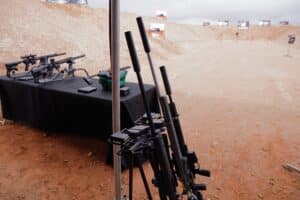We’re officially more than halfway through January and much (though, maybe fewer than normal) of the gun world is headed to Las Vegas. I’m anticipating shooting some of the industry’s newest offerings and trying to find some interesting stories to share with you guys from its trade show. I foresee a lot of walking in my future. Wish me luck.
That’s what’s ahead. Here’s what we have for today.
First, I talk with Matt Stoller on the podcast about how anti-trust law and mega-companies have contributed to our ongoing ammo shortage.
Plus, I talk to GOA’s Pennsylvania director about why he views the failed attempt to make permitless carry law of the land as a kind of stepping stone. He argues it was not a waste of time, but an important tactical victory.
And, I get some range time in with my Sears “ghost gun.”
Before we get to those stories, though, let’s talk a bit about SHOT Show and the NRA’s most recent board meeting.
The NRA Board Meeting and Shot Show
This newsletter is coming to you from Las Vegas, folks.
My plans have changed slightly thanks to some weather that is about to hit the east coast. While I was initially scheduled to fly out of Charm City and on to Sin City during Sunday night, mid-Atlantic is about to be covered in snow once more. So, I decided not to take the risk of having my flight canceled and head out to Vegas a day early.
That means I’ll be watching my beloved Eagles play in the wildcard round at the Westgate sportsbook later today instead of back home with family and friends. That’s not all bad news, though, because I actually watched the Eagles win the NFC Championship at Westage back in 2018 when they went on to win the Super Bowl. I wasn’t able to climb any of the greased-up light poles in Philly that night, but–don’t worry–I made up for it the next weekend.
If any of you are in town, feel free to drop me an email and we can meet up or perhaps even watch the game together!
One of the effects of my change of plans was that I couldn’t attend the NRA board meeting in person on Saturday. I usually attend the meetings to try and keep tabs on what the board is doing. But, frankly, they tend to be pretty dry affairs and the board tends to go into private sessions when they discuss the really important things like the case against the organization in New York.
They also tend to be extremely sparsely attended. That appears to have been the case this time around as well. Frank Tait, a Wayne LaPierre critic who is currently running to be on the board, told me he was the only regular NRA member at the meeting. He the board spend about half the meeting in private session–which they call executive session–and no major announcements were made.
He counted just 38 of the 76 board members in attendance. That’s a bit lower than normal even with the board having notoriously poor attendance at meetings–though the weather and latest Covid surge may have further reduced numbers this time around.
Tait has published his account of the meeting as well as the various committee meetings the NRA held this week on his substack. You can check them out if you’re interested in his point of view.
Podcast: Matt Stoller Argues Industry Consolidation Contributes to the Ammo Price Surge
By Stephen Gutowski
Matt Stoller, Director of Research at the American Economic Liberties Project, joins me on the show this week to talk about the ongoing ammo shortage and the resulting price hikes we’ve all been experiencing lately.
Stoller recently wrote a widely-circulated piece on his Substack arguing the market dominance of Vista Outdoors and Olin Corporation contribute to the supply problems and price hikes. Those companies own many of the most popular ammo brands including Federal, American Eagle, CCI, Winchester, and Remington. Stoller says the companies use consolidation, such as Vista’s recent purchase of Remington’s ammo business, to better control market supply and pricing.
We discuss how much impact tactics like that can have in the ammo market in particular–especially since Vista and Olin have major competitors such as Sig Saur and Hornady. This is especially true given that ammo is distributed through many small stores rather than large chain retailers which means it is more difficult for major ammo makers to try and manipulate distribution channels.
And, of course, the price of nearly everything has increased over the past few years. Clearly, that is also driving up the material costs for ammo makers too. The pandemic has led to increased demand, strained supply chains, and surging prices in many industries across the board.
But, Stoller argues consolidation is just one piece of the puzzle and the ammo business is just one example of how it blunts market forces. He describes how the ammo market’s high barrier of entry compounds the effects of consolidation and adds to supply constraints. Ultimately, he argues a few small companies dominating the market keep rising prices from quickly resulting in a rising number of suppliers.
In the end, that means record profits for Vista and Olin at the expense of the consumer.
I reached out to Vista and Olin for their side of the story but never received a response. I’d be happy to have somebody from either company on the show in the future, though.
Contributing Writer Jake Fogleman and I also cover the state agendas released by Everytown for Gun Safety. The leading gun-control group’s top priorities in each state give a guide for the battles over gun policy coming in the new year and what they leave out may be just as interesting as what they included.
Plus, Reload Member Dr. Jackson Crawford shares his background and what first got him interested in firearms. As an authority on a specific, and sometimes controversial, topic himself, he talks about what The Reload does that made him want to join.
You can listen to the full podcast on your favorite podcasting app or by clicking here.
The full video podcast is also available on our YouTube Channel.
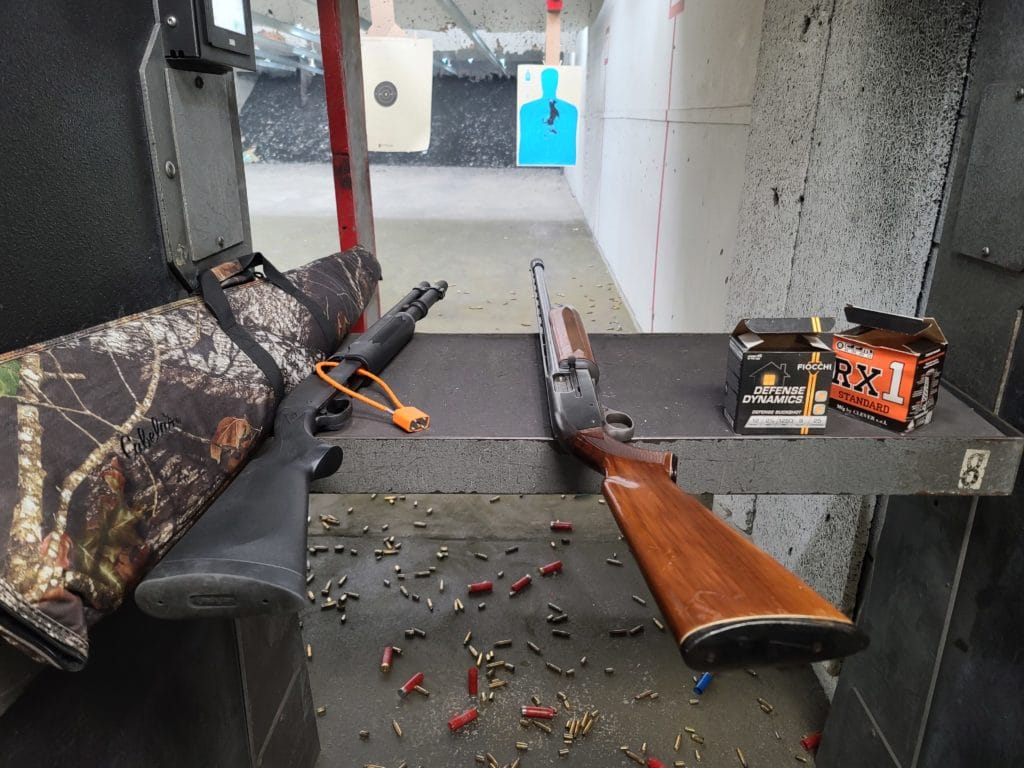
Shooting My ‘Ghost Gun’ From Sears
By Stephen Gutowski
I was finally able to get out to the range and actually shoot my Sears-made “ghost gun.”
For those who don’t know, I bought a cheap used semi-automatic shotgun a few weeks back. This one has two twists that younger people reading this may be surprised by. First off, it’s made by Sears. It has the roll marks to prove it and everything!
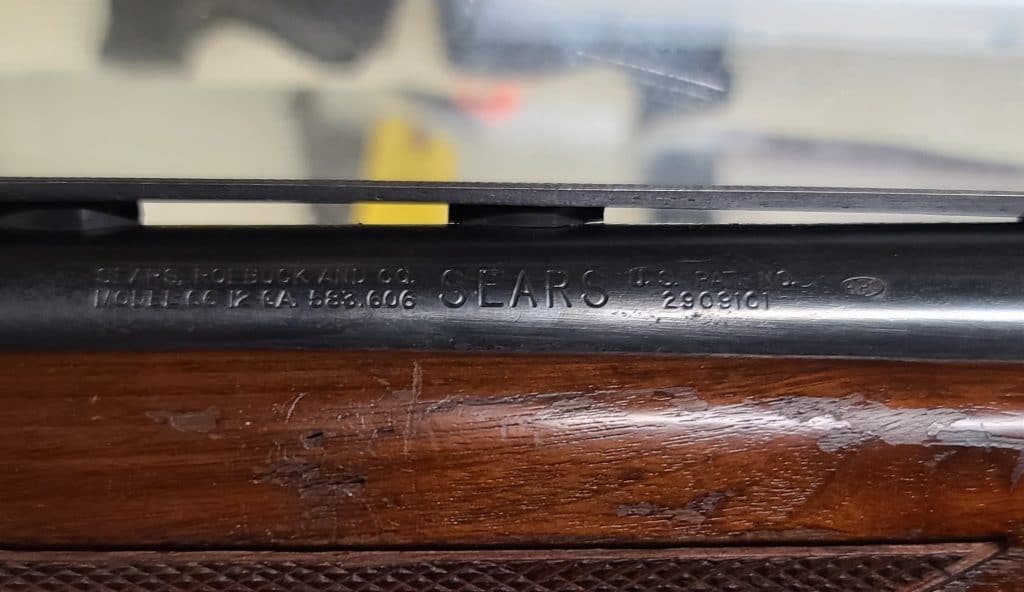
The second twist is what it doesn’t have: a serial number.
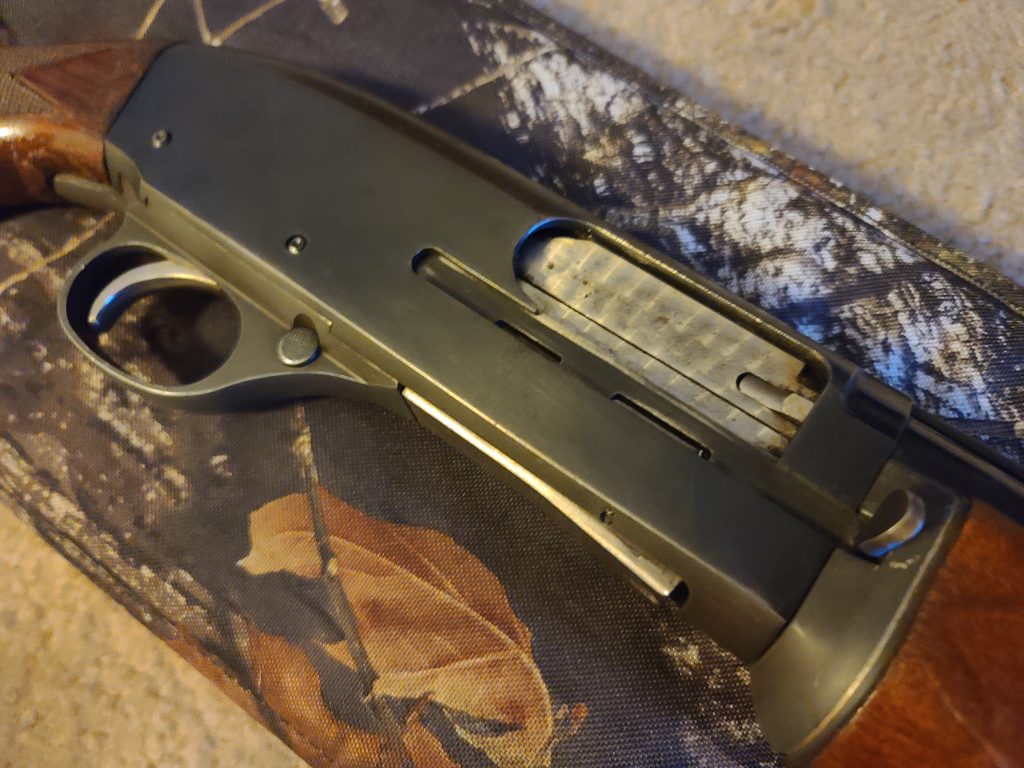
That’s because this gun was made and sold before the passage of The Gun Control Act of 1968. It may have been sold through the Sears catalog and shipped directly to somebody’s front door.
Back before The Gun Control Act, it was common for Americans to buy guns that way. And gun makers weren’t required to serialize their firearms. So, many didn’t.
Now, some states and localities are trying to make it illegal to even possess guns like this. No serial number means no trace is possible if the gun does end up at a crime scene. The current rush to ban these guns is driven mostly by the rise of 3D-printed gun components and homemade firearms.
But, it’s important to remember just how common this was not all that long ago.
As for the gun itself, it’s in pretty good shape for a cheap old gun from Sears. It’s probably holding up better than most of the things they sold once they became the mall anchor store I remember them as.
It seems to have a magazine plug in it since I couldn’t get more than two rounds into the tube at a time even though it should hold four. I’m guessing somebody used this as a hunting gun at some point and just left it set up that way. I suppose that makes sense as it’s the only practical use I could see for this gun with a barrel this length.
It shoots pretty well and I honestly had a good time with it.
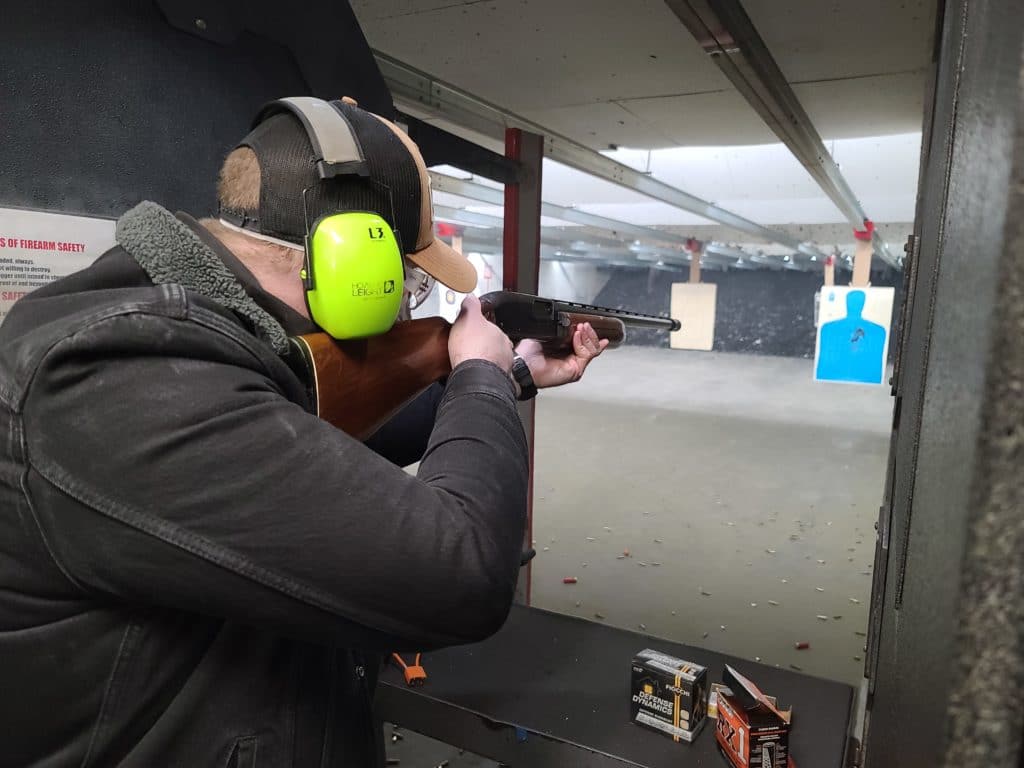
I did run into some feeding issues. It may not like longer shells as the jams seemed to be primarily caused by the shell rubbing against the bore of the gun as the feed tray tried to push it up and into the barrel. But, to be fair, I literally didn’t do anything to this 60-year-old $175 gun after I bought it.
So, maybe it just needs to be deep cleaned and oiled to work properly.
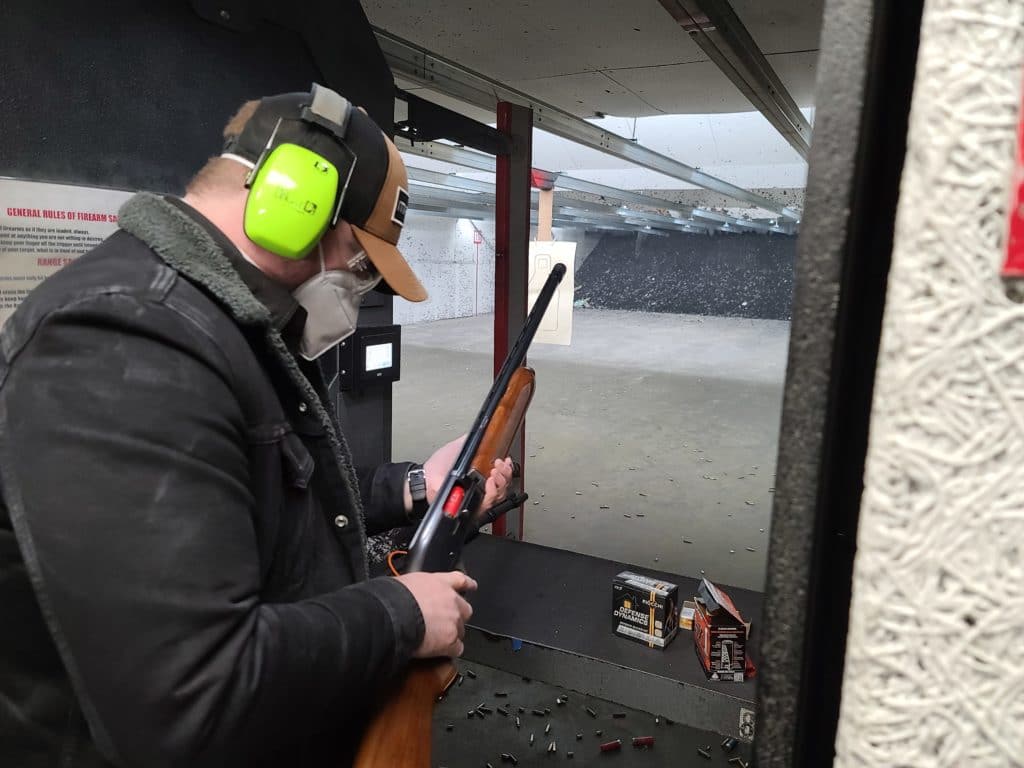
Either way, it was a really enjoyable gun to shoot. Plus, you can’t beat the cool factor of the veri-choke. I have no idea if it’s actually practical at all, but it sure does look nice on the end of that barrel.
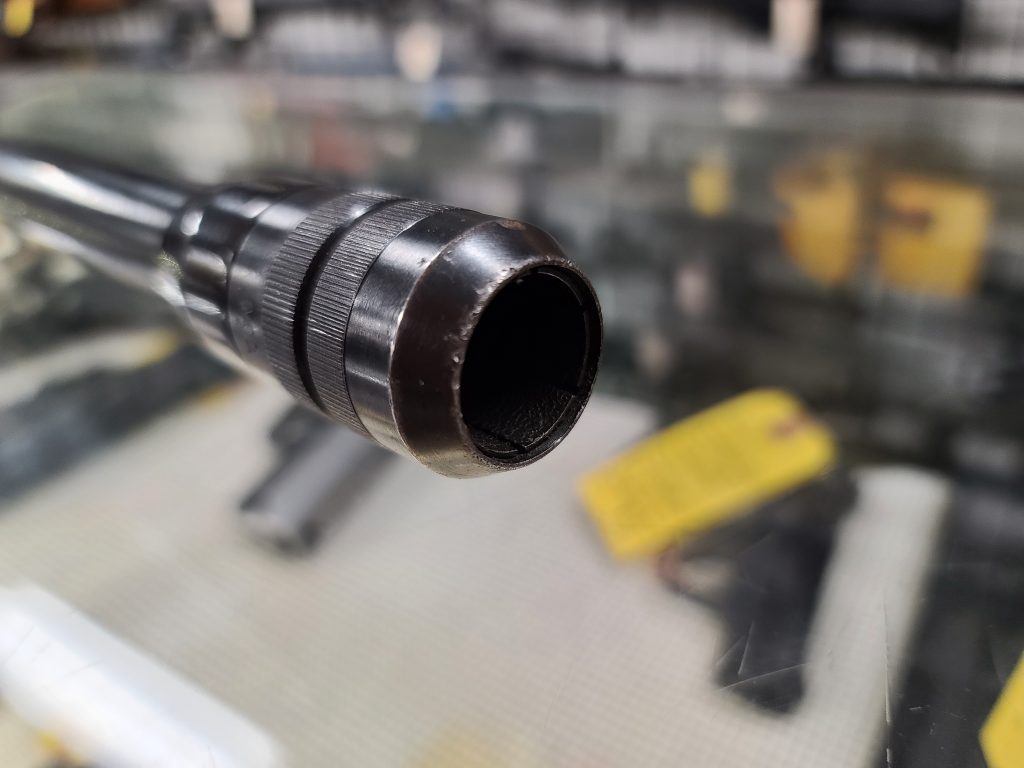

GOA’s Pennsylvania Director Explains Why He Views Permitless Carry Vote as a Win Despite Governor’s Veto [Member Exclusive]
By Stephen Gutowski
Gun-rights advocates managed to push permitless gun-carry through the Pennsylvania legislature late last year only to see it killed by the governor. So, why does one of the top gun lobbyists in the state still view it as a big win?
As the debate over who deserves the most credit for the bill making it out of the House of Representatives and state Senate rages on, it’s important to understand why so much effort was put into a bill everyone knew Governor Tom Wolf (D.) wouldn’t sign. Twisting arms and calling in favors to push a bill with no chance of becoming law may be seen by some as a fool’s errand. Val Finnell, Pennsylvania Director for Gun Owners of America (GOA), sees it differently.
“From a strategic standpoint, it’s always good to push bills, even when they can’t get signed in the law,” he told The Reload. “That’s because you get a recorded vote, and that recorded vote is very valuable. And people don’t understand this. I have to explain it to them all the time on social media; this is not a waste of time.”
He argued the recorded vote can be used in multiple ways. First and foremost, Finnell said forcing the Democratic governor to veto the bill provides motivation for gun voters to turn out in the 2022 gubernatorial race.
“It gives us more fuel for the fire to get a pro-gun Governor,” he said. “We’ve just got to get one more step.”
Another key role the permitless carry vote plays is identifying which Republicans won’t vote for GOA’s priorities. Finnell said the group will use that information to decide who to try and replace in future elections.
“We know the eight Republicans who voted against us,” Finnell said. “Now we can look at that list and say, ‘well, who here can be changed out?’ And that’s what we’re looking at right now. Who’s just paying lip service to the Second Amendment? Who’s really a true believer? That’s what these recorded votes do. That gives us a target list for the primary coming up.”
He singled out Republican representative Bob Brooks, who represents parts of Westmoreland and Allegheny County, as a prime example of somebody the group plans to go after over the vote.
“At the end of the day, we connect the legislative season to election season,” Finnel said. “And guys like Bob Brooks, who voted against constitutional carry, we’re gonna hold them accountable.”
Finnell said the vote provides ammunition for GOA’s confrontational approach to lobbying. Instead of influencing politicians through friendly interactions, the group looks for opportunities to show their support or opposition.
“It’s sort of like training a dog, right?” he said. “It’s reward and punishment. With access-based politics, it’s all about being liked, going in there and schmoozing, and never offending anyone. What happens over time is that you end up being part of the political class yourself. You end up representing the legislators to your members rather than your members to the legislators.”
The confrontational stance isn’t intended to annoy or pester, though critics argue it does precisely that. Instead, Finnell said the goal is to send lawmakers clear signals and not allow them to become complacent.
“It’s not about being rude to people,” he said. “It’s more about, ‘okay, here’s our expectations, and it really comes down to this give us your vote or give us your seat. That’s it. That’s what really works.”
Naturally, though, this kind of confrontation often leads to animosity from lawmakers or even other gun-rights groups who argue it does more harm than good. Finnell said he expects backlash. He said it comes down to the way GOA’s advocacy intentionally tries to push politicians out of their comfort zones.
“We’re mobilization, confrontation, and direct constituent engagement,” Finnell said. “That makes a difference. Because, at the end of the day, these legislators, when they feel the heat from their district, they get things done. Access-based organizations don’t like that approach because a group like ours threatens their access to the politicians. So, there’s a lot of infighting that happens because of that.”
Finnell said the passage of permitless gun-carry is evidence their approach is working.
“We had to kick [Pennsylvania Senate President Pro Tempore] Jake Corman and [Majority Leader] Kim Ward in the teeth, but they moved the bill,” he said. “And that’s the bottom line.”
He’s confident GOA will leverage the vote and the group’s lobbying approach to bring permitless carry to Pennsylvania eventually.
“As time goes on, our approach will be vindicated,” Finnell said. “There’s no question.”
That’s it for now.
I’ll talk to you all again soon.
Thanks,
Stephen Gutowski
Founder
The Reload






